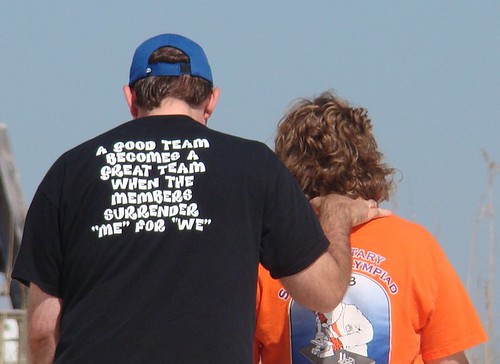The ACE Marketing SIG asked me to do a Q&A about my job as a social media strategist for the Military Families Partnership which is a Department of Defense Initiative with NIFA and Cooperative Extension.
Rather than keeping my answers closed in the email reply, I am sharing them here.
Q: What is a Social Media Strategist?
I was hired to help eXtension Communities of Practice--in particular those whose work in helping military families and military family service professionals--use, surf, lurk, engage, and co-create in online social spaces. Most organizations hire social media strategists either full-time or through a consultant arrangement to advise them on using social media for marketing. Because our (Cooperative Extension’s) role is in education, we see that social media strategies and tactics should be grounded in our education role. While we will certainly use social media to market and find new audiences, we are not solely concentrating our social media efforts in marketing.
Q: How would you describe your day to day work?
The Military Families Community of Practice (CoP) work is still developing in its early stages. Most of my work thus far has been in trying to build relationships with eXtension CoP leaders, DoD, NIFA and other partners. Soon, I hope you will begin to see some products. We hope to have professional development sessions around social media. We also want to help CoPs design professional development sessions that are sought by military family service professionals and are indicated by DoD priority areas--personal finance, child care, community capacity, and workforce development. We want to integrate and wrap social media applications around these sessions and the content that will developed for those sessions. For instance, we want to use Facebook, Twitter, blogs, some military social spaces, like Military One Source, to talk about the sessions, before, during and after the web conferences. The use of social media will be used not only to market but to share educational content and engage with people who are interested in the topics.
My days right now are more in the planning stages. I foresee my days in the future working with directly with the Military Families CoP, partners, existing CoPs, and other Cooperative Extension professionals in how to use online tools to accomplish their educational goals.
Q: While your work deals with Military Families Partnership, do you see other areas where Extension programming work and social media strategy could benefit from or is benefitting from?
Absolutely. As we build a social media strategy and use social media for the Military Families Partnership, these efforts will be intertwined with other eXtension CoP work and with Cooperative Extension work. As we develop professional development sessions around social media these sessions will be open to the public and will target both Cooperative Extension and military family service professionals (those who work for DoD and the military service branches).
Watch for these on learn.extension.org. In fact, we have asked John Dorner and Kyleen Burgess of North Carolina to provide a session on Facebook privacy settings for professionals on November 30.
Q: What about social media should marketing professionals keep in mind?
Most examples and social media strategists talk about using social media for marketing. Many of these strategies are designed in traditional marketing strategies using new tools. The problem with this approach is eventually the marketing – the broadcasts – become noise and eventually ignored. If we consider social media more like social space – comparing online social spaces to traditional and physical social spaces--we see social media more of a place to meet people, engage, listen, and learn. Then we turn those conversations into meaningful actions in developing education. Albeit in traditional social spaces, conversations and interactions are not usually recorded. Cooperative Extension’s product is education. A progressive approach is to not only think of social media as another way to market Cooperative Extension programs, but also to align social media with educational efforts to help accomplish educational and learning goals. Using social media to become members of communities where the members (Cooperative Extension professionals and clients) share learning goals so that the teaching is not always one way (Cooperative Extension professionals to clients), but rather the interaction and engagement yields learning and teaching by potential all members (Cooperative Extension professionals and clients) of the community. Marketing professionals have an opportunity to lead the way and model crossing functional lines and integrating education, marketing, public relations, and content creation by first looking at the social media space as a place they can learn and interact with others (in and outside of Cooperative Extension).
My most prominent piece of advice is to start now. Start listening online, then teach others—educators and administrators how to listen online. Start by creating Google Alerts, blog searches, and Twitter searches on typical words used to describe Extension institutions Cooperative Extension professionals and areas of interests. Here are some of the search terms I have used: Alabama Cooperative Extension (Google Alert), county agents, Extension agents, County Extension, oil spill, bioenergy, alfalfa, nutrition, counting calories, military child, child care. I changed these terms to others as I need to learn what people are saying about other topics.







